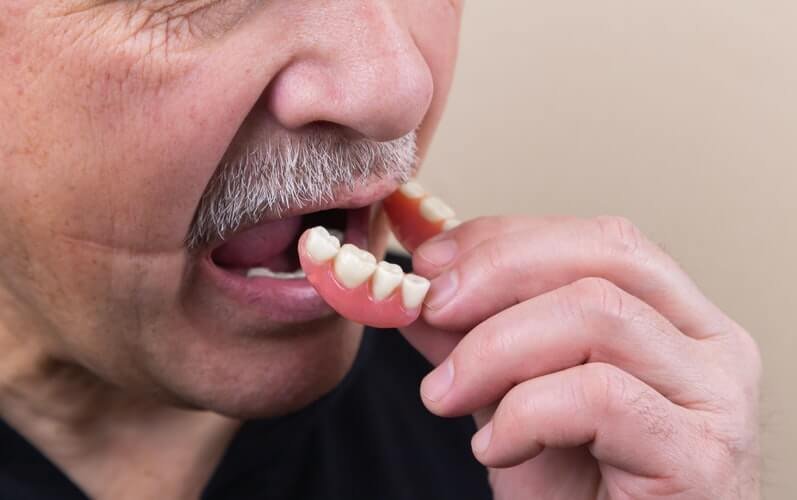If you have gotten into an accident that resulted in a gap between your teeth, it would be best to get a dental bridge from professionals.
Although you have missing teeth does not mean you are qualified to undergo a dental bridge procedure. You need to consult a reputable dentist to help you fix the problem properly. In this post, we will give you brief information you should know about dental bridges.
What is a Dental Bridge?
If you have broken or missing teeth, a professional dentist would recommend you to consider dental bridges. This procedure will help to fill the gaps caused by missing teeth. Do not worry since fake teeth used by the dentists in performing dental bridges function and look like the real ones.
If planning to have a dental bridge, it is best to talk to a prosthodontist or a regular dentist who knows how to restore and replace your missing tooth. Beyond the dental bridge, various procedures could fill a gap between your teeth. One of these is having a crown. This procedure attaches a fake tooth between the real ones.
If you have a missing tooth because of a cavity or an accident, having a tooth crown is not always the best option. With that being said, we highly recommend you consider dental bridges.
Types of Dental Bridges
The following are the different types of dental bridges used for fixing the spaces between your teeth.
- Traditional Dental Bridges (Fixed Dental Bridges)
Traditional dental bridges are made from false teeth that will be attached between the gaps in your teeth using the dental crowns. This type of dental bridge is recommended for those with gaps between their natural teeth.
- Cantilever Bridges
A cantilever bridge looks the same as the traditional bridge. The only difference is that the false tooth is attached to only one tooth with a dental crown. Unlike the traditional dental bridges, this one only requires a single natural tooth to fill the gap in your smile.
- Maryland Bridges
A Maryland dental bridge uses two natural teeth to attach the two sides of the fake tooth. This type of dental bridge does not use dental crowns, but a framework made from porcelain or metal. Maryland bridges are perfect to use if you still have natural teeth where the false tooth will be attached
- Implant-Supported Bridges
Implant-supported bridges are a type of a dental bridge that uses dental implants rather than frameworks or crowns. Each gap between your tooth will be implanted by a natural tooth holding the bridge in place. In case a single implant is not possible, the artificial tooth on the bridge might be placed between implant-supported crowns.
Benefits of Dental Bridge
The following are the advantages of having a dental bridge.
Help Your Bite – When you lose even one tooth, biting foods might be hard for you. Eating with gaps in your teeth could lead to gum damage caused by the buildup of food particles to the gap. A dental bridge will fill the spaces between your teeth. Thus, giving you more confidence to eat and chew your favorite dishes.
An Alternative Option to Implants – Compared to tooth implants, dental bridges are way cheaper and can be done pain-free.
Restore Your Ability to Chew and Speak – Speaking confidently in front of your friends might be a problem if you have enormous gaps between your teeth. Beyond that, pronouncing some words might be hard for you. Talk to your dentist and ask them what type of dental bridge is perfect for you to restore your ability to chew and speak.
Restore Your Smile – Smile is the most beautiful curve on your face. So, consult your dentist when you have undesirable gaps between your teeth. A dental bridge is an immediate and cost-effective solution you can do to restore your smile.
The Procedure Used to Put Dental Bridge
The process of filling the gaps between your teeth through a dental bridge is pain-free and easy. The first step in putting a dental bridge is to inject numbing agents, such as Novocain. This will help you remain relaxed during the entire process.
After that, the dentist will file all your natural teeth until it shows tiny nubs. After tooth filing, the crown will be placed between your teeth to hold the artificial tooth.
In most cases, artificial teeth are made from either ceramics or porcelain. These false teeth will give you the same feeling as a real tooth. When the false teeth are ready, your dentist will attach them between the gaps using the crowns, holding them in a fixed position.
Care and Maintenance of Dental Bridges
You need to treat your dental bridges the way you care for your natural teeth to keep them in a good condition. After the procedure, you need to brush them every after eating. Beyond that, you also need to floss once a day. These care and maintenance tips will keep your teeth free from cavities and gum diseases.
Regular flossing and brushing of teeth are not enough to give your dental bridge the right care and maintenance. Thus, a regular dental check-up is a must. Your dentist will not only clean your teeth thoroughly, but also check if there are gum problems that could arise. Unlike regular flossing and brushing, professional cleaning keeps your teeth free from plaque and tartar, thus keeping them look and feel healthy.

